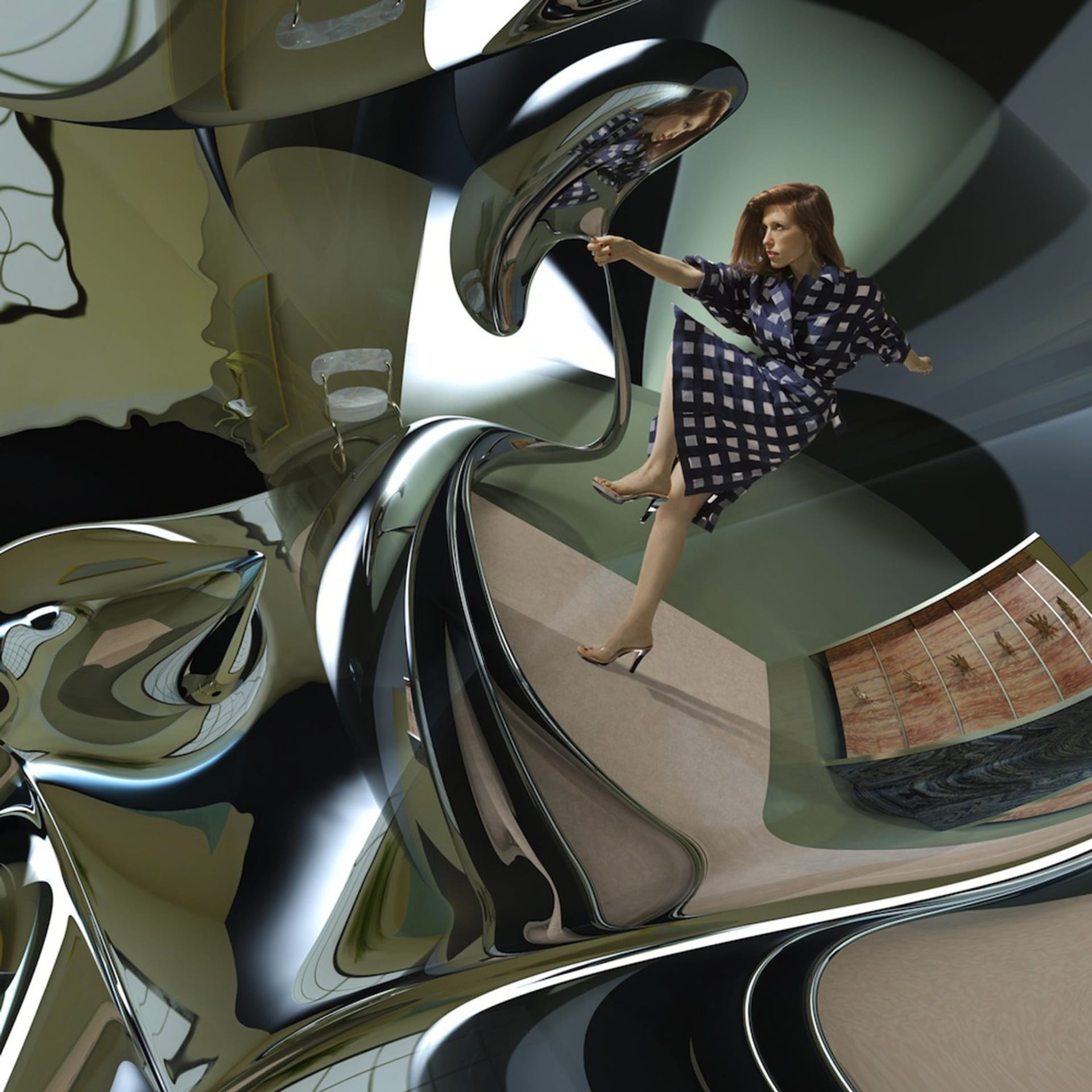
Inside, Out: Daniel Jones on Glasser’s Interiors
Cameron Mesirow has found her pop confidence, but what makes her new album shine is not accessibility, but her own willingness to take unexpected sidesteps, says Daniel Jones.
Whenever a musician moves from a previously established, multi-genre sound into more dance-friendly territory, they run the risk of alienating their old audience for the sake of a new one. Cameron Mesirow’s 2010 LP Ring was her first full-length under the name Glasser, and it built on all the beauty and left-field pop promise that her first single “Apply” showed. Melding tribal percussion with slow, introspective electronics, Ring was a glimpse into Mesirow’s dreams. On her sophomore effort Interiors, she’s drawn those inner visions out, breathed vibrant life into new dreams… but the mood is changed. The initial impression is that Mesirow has opened up, allowing the listener a closer glimpse at a life three years away from the ominous, Lynchian “Mirrorage” and the spaced-out and claustrophobic epic “Tremel”. This is pure, polished synthpop, strutting and swaying straight to an art-damaged dancefloor near you—albeit in a slightly crooked way. Mesirow has found her confidence and allowed some inner light to show, and the clarity of it is what makes this album shine.
That shine is not built upon the album’s clearer pop influence and more conventional structure, but rather Mesirow’s willingness to take unexpected sidesteps. The lash of the whip cracks that make up the spine of opener “Shape”, plucked and gently mangled by sine wave manipulation. The pierce of “Design”‘s vocal stabs, interspersed with slashes of gasps. “Landscape”‘s mournful and evocative sorrow that twists Mesirow’s voice out of reality before slipping into something more minimal. There’s more than a touch of the artificial to the proceedings; architecture-as-human-condition, after all, is the album’s theme. But that artificiality counterpoints the more traditional musical elements in a way that keeps things surprising and fresh, such as on “New Years” where clockwork birds beat wings against jazzy woodwinds, peeking from behind swiftly-stacked vocal layers before exploding into the sky.
Where the album missteps is in its willingness to embrace this minimalist artificiality a little too one-sidedly. While Ring wrapped voice around percussion in a symbiosis of sound, here much of the beauty is derived less from instrumental textures. Mesirow’s voice is clearly the main attraction, and appropriately there’s nothing too complex happening in the background to distract from her. This works to fine effect in moments like the joyous dance tracks “Exposure” and “Keame Theme”, the propulsive beats and squelchy drum pads sliding slickly atop searing synthlines and ecstatic choruses, or on “Forge”, where skittery metallic rhythms exist merely as metronomic balancing points. But that simplicity is also Interiors’ flaw. Imagine a human skeleton—it is the Halloween season, after all—with the most flawless bone structure imaginable. It’s exposed, perfect, as open as it can be; yet the marrow of the bone has dried up, the muscle and flesh which support it long gone. The function and shape are still there, but not the form that made it so desirable in the first place. In its stripped-back and lipless simplicity, Interiors still has teeth, but lacks both the kiss and the bite Glasser previously showed.
I’ve been listening to this album more than I might have otherwise to determine exactly what it is I feel about it because, despite the above, I truly enjoy listening to it. As previously stated, there’s plenty of pop magic lurking in the songs themselves, particularly when Mesirow hits the choruses and allows both voice and instrumental to flex together fully rather than merely standing closely besides each other. It’s impossible to ignore the commanding strength of her vocals as they leap from fragile balsam to tempered steel in an instant. I wish, however, that she had maintained her impressively growing lyrical technique without paring back the structure’s flesh. Had she done so, the excellent album—as well as the human emotions that, despite Ring‘s more introverted tone, felt more apparent there—lurking beneath Interiors’ crisply-produced carapace would be allowed to show fully. Instead, what we have is a beautifully rigid and slightly cold electronic pop that will enrapture the ears while playing, but may not linger long in the soul. ~
Interiors is out now on True Panther.
Published October 24, 2013. Words by Daniel Jones.
